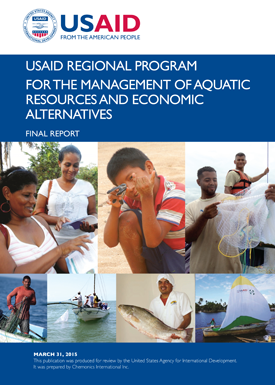
Final Report: USAID Regional Program for the Management of Aquatic Resources and Economic Alternatives .
Project Report | March 31, 2015

The USAID Regional Program for the Management of Aquatic Resources and Economic Alternatives strengthened coastal-marine resource management and biodiversity conservation while improving the livelihoods of local populations.
Biodiversity loss is one of Central America’s most pressing challenges. The five-year, $13.9 million USAID Regional Program for the Management of Aquatic Resources and Economic Alternatives, implemented by Chemonics International, was developed to strengthen coastal-marine resource management and biodiversity conservation while improving the livelihoods of local populations. Population growth in coastal marine areas, climate change, overfishing, and a tradition of “open access” to natural resources, pose a great threat to the future of coastal-marine resources in the region. These challenges along with the demand for limited resources required the Program to carefully consider its strategy to promote biodiversity and conservation in the region. The USAID Regional Program partnered successfully with local populations, like artisan fishermen and indigenous communities, as well as non-profit organizations, private sector, and government authorities to support coastal-marine biodiversity conservation. This involved improving management of critical ecosystems; improving policy and governance; increasing capacity of fishermen and other stakeholders to use more sustainable practices to extract coastal and marine resources; establishing access rights and aligning market incentives to promote more sustainable use of biodiversity; and promoting economic alternatives to reduce pressure on threatened species.
